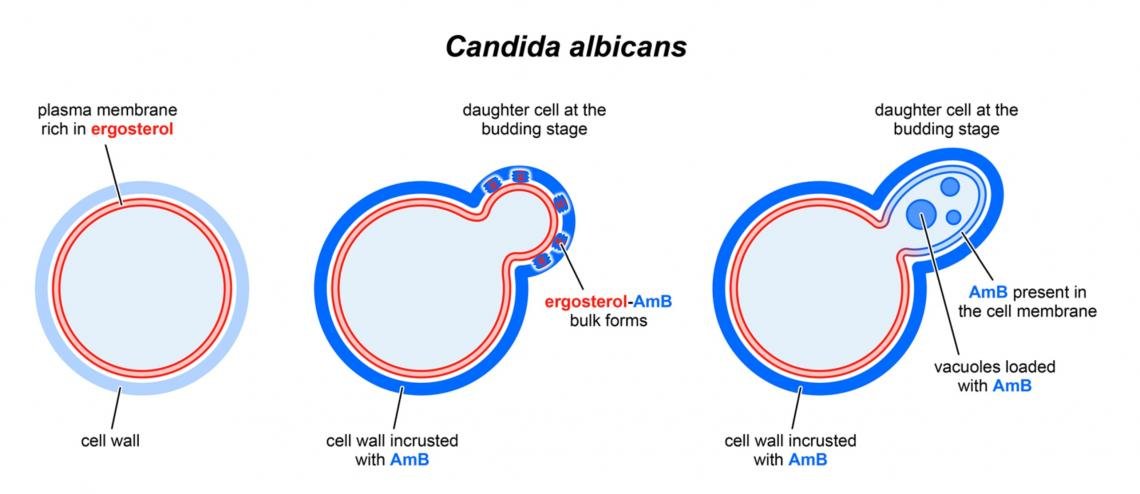
Modes of the antibiotic activity of amphotericin B against Candida albicans
Ewa Grela, Agnieszka Zdybicka-Barabas, Bozena Pawlikowska-Pawlega, Malgorzata Cytrynska, Monika Wlodarczyk, Wojciech Grudzinski, Rafal Luchowski & Wieslaw i. Gruszecki
Amphotericin B is an antibiotic used as the “gold standard” in the treatment of life-threatening fungal infections. Several molecular mechanisms have been proposed to explain exceptionally high effectiveness of amphotericin B in combating fungi. In the present work, we apply fluorescence lifetime imaging microscopy to track, step by step, modes of the toxic activity of amphotericin B towards a clinical strain of Candida albicans. the images recorded reveal that the antibiotic binds to cells in the form of the small aggregates characterized by a relatively short fluorescence lifetime (0.2 ns). Amphotericin B binds preferentially to the cell walls of mature cells but also to the plasma membranes of the daughter cells at the budding stage. the images recorded with the application of a scanning electron microscopy show that the antibiotic interferes with the formation of functional cell walls of such young cells. the results of imaging reveal the formation of the amphotericin B-rich extramembranous structures and also binding of the drug molecules into the cell membranes and penetration into the cells. these two modes of action of amphotericin B are observed in the time scale of minutes.
